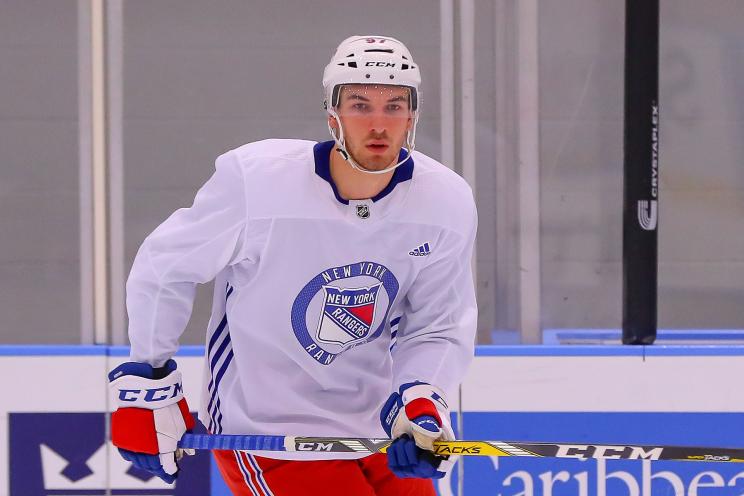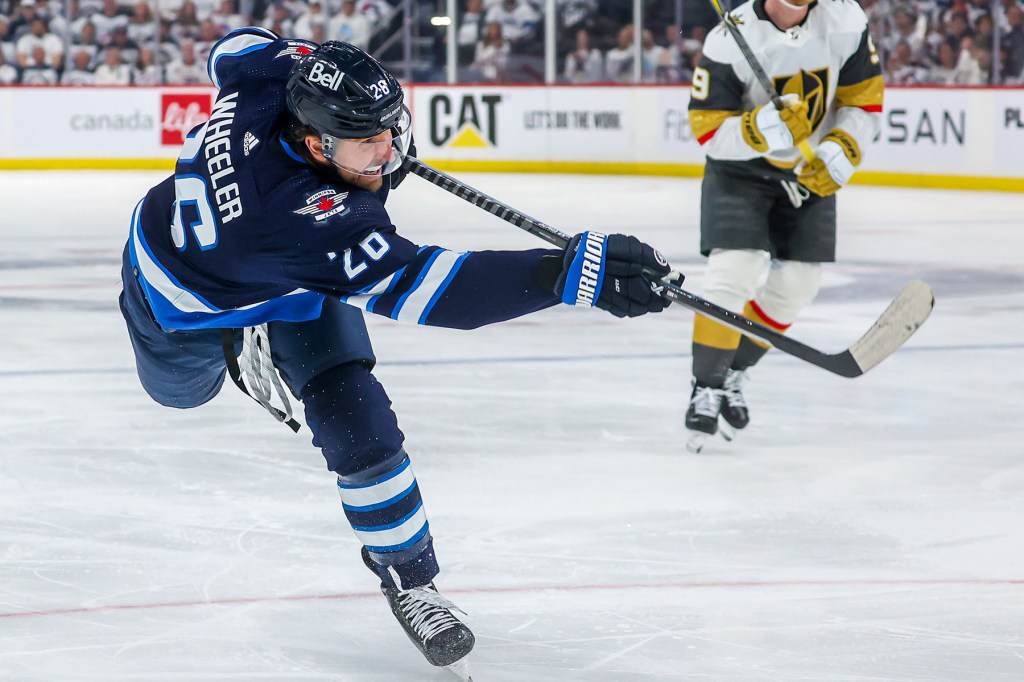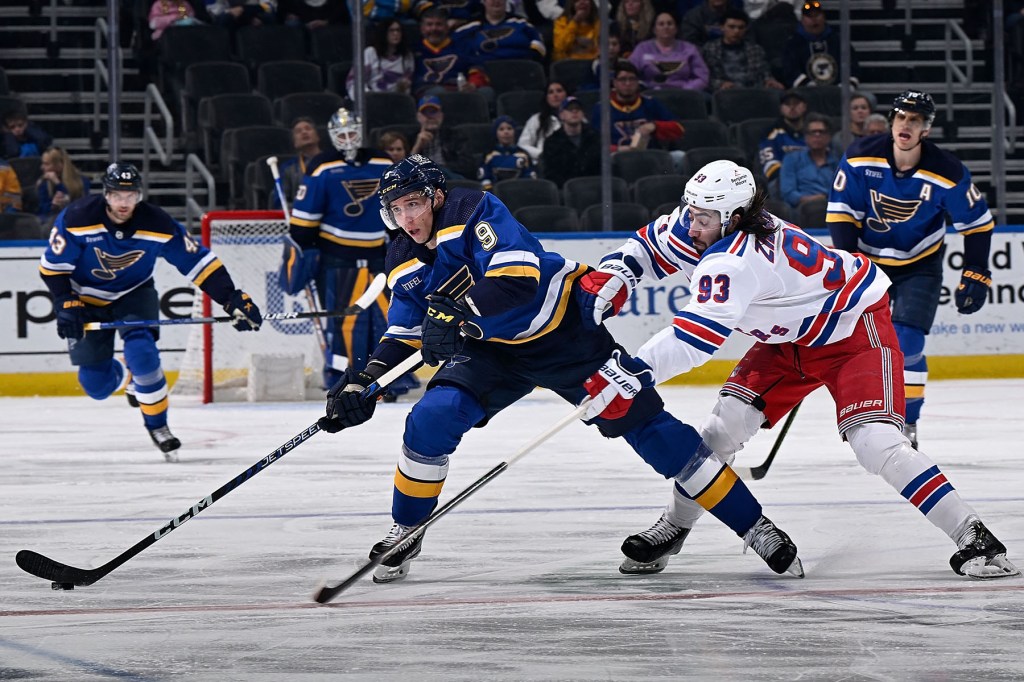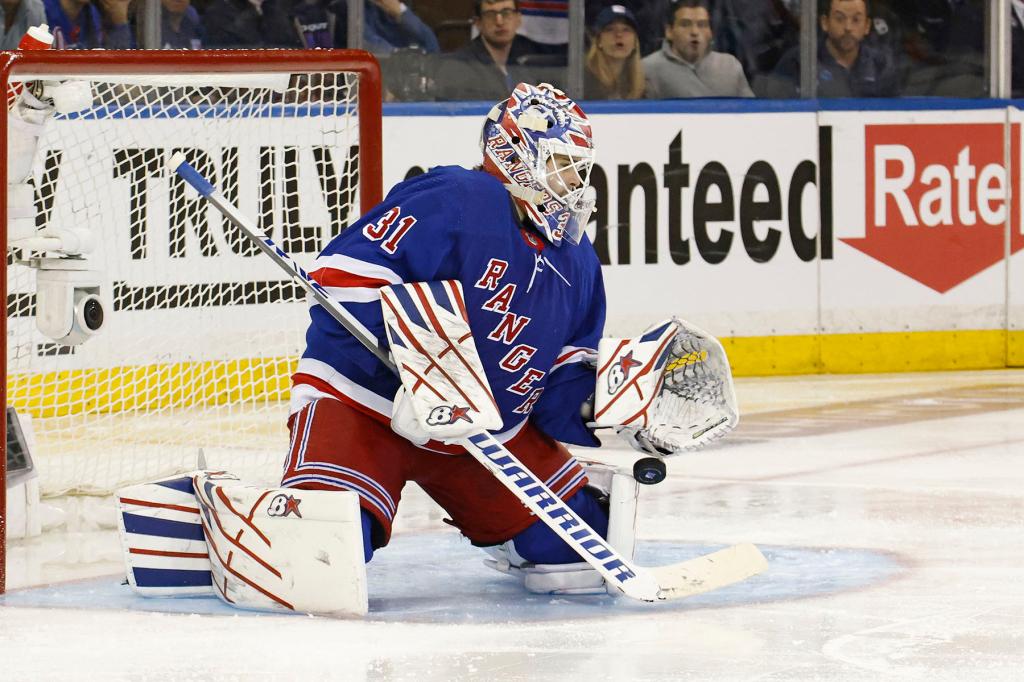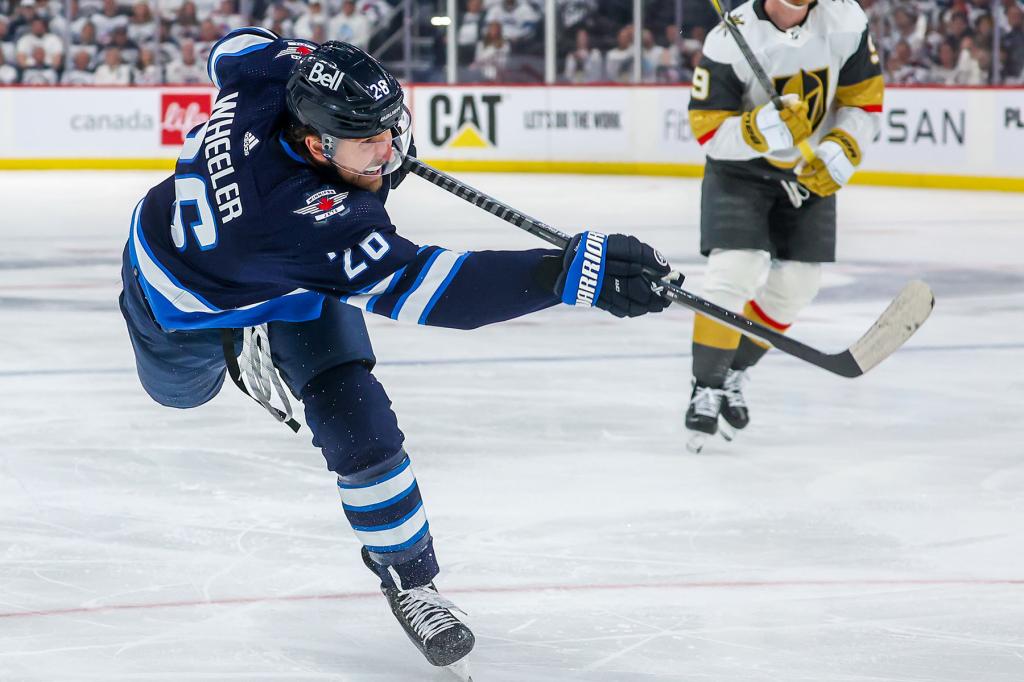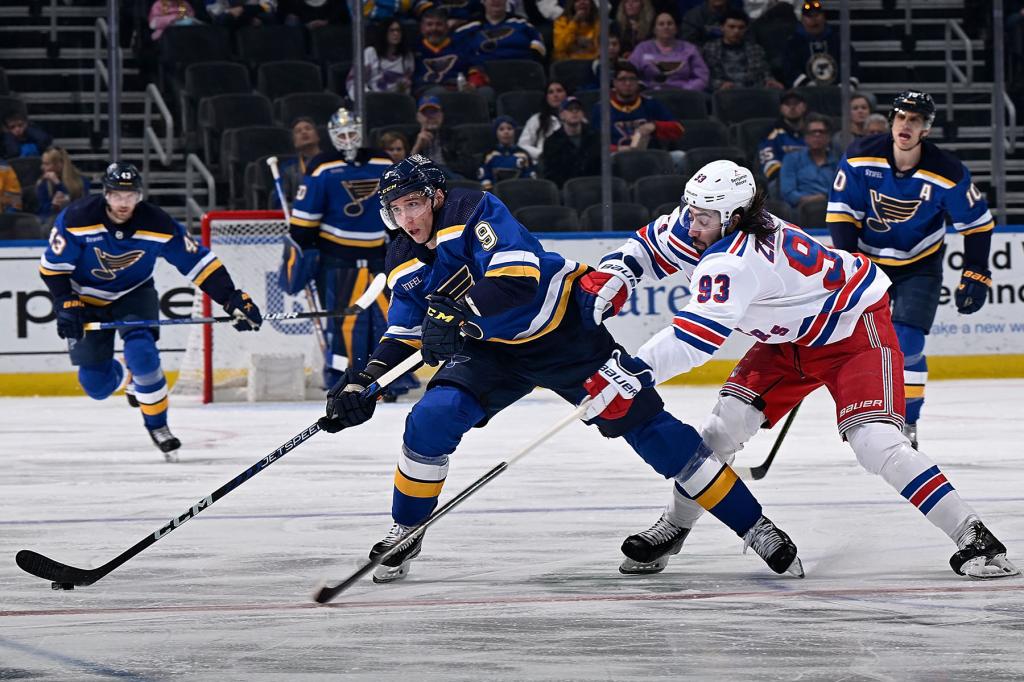Development camp opening a day after free agency provides the perfect juxtaposition to explain why the Rangers and GM Chris Drury took the road they did on Saturday.
To a large extent, yes, of course the cycle of flat caps produced by the CBA extension forged during the pandemic was the most prominent factor in the Blueshirts’ spending restraint. The proliferation of no-move contracts among the veteran core also played a role in Drury’s limited maneuverability.
But an equally critical reason the Rangers were forced to add multiple veterans to primarily fill roles on the bottom six for less than a $1 million cap hit apiece is because the feeder system of young players who made their unofficial debuts at previous development camps has malfunctioned.
Ideally, the Blueshirts would have a handful of 25-to-27-year-olds holding and competing for support roles. They would have come out of the drafts from 2014 through 2016. But guess what? There’s no one there.
The Rangers drafted seven players in 2014 after having traded their first-rounder to Tampa Bay in the deadline deal for Martin St. Louis.
Other than Igor Shesterkin, selected in the fourth round at 118th overall, the other six have combined to play a total of two NHL games, and only one for the Blueshirts. That would have been the 12:33 Brandon Halverson played in relief of Henrik Lundqvist in Ottawa on Feb. 17, 2018.
The Rangers drafted seven players in 2015 after having traded that year’s first-rounder as well to Tampa Bay in the St. Louis trade.
The seven selected players, beginning with Ryan Gropp, the second-round pick obtained from Anaheim in the disastrous trade for Carl Hagelin, have combined to play 10 NHL games and one for the Rangers. That was seventh-round netminder Adam Huska’s Dec. 8, 2021 start against Colorado in which he allowed seven goals in a 7-3 defeat at the Garden.
The Rangers drafted six players in 2016 after having traded their first-rounder a year earlier in the deadline trade for Keith Yandle.
That sextet has combined to play 22 total NHL games, and 20 for the Rangers as represented by Tim Gettinger’s 16 matches, in which the winger — signed on Monday as a free agent by the Red Wings — recorded a grand sum of one assist, and Tarmo Reunanen’s four contests, in which he, too, posted one assist.
Throwing (some) money at the problem
From ’14 through ’16, then, the Blueshirts selected 16 skaters from whom they got an aggregate 20 games, no goals and two assists. These were the players who skated in those development camps. These were the players who should be forming a pool of potential depth players within the organization.
Instead, the Rangers added 30-plus-year-old support forwards Tyler Pitlick, Riley Nash and Nick Bonino as well as 30-plus winger Blake Wheeler, a legit top-six candidate following his buyout by Winnipeg.
That signing represents a horse of a different color, and it could become one of the most rewarding of this free-agent season, but it still added another 30-plus player to a mix that is overflowing up front with those types.
If Pitlick and Nash both open the season in New York, the Rangers will have nine forwards aged 30 and over. That troubles me, even if Drury was able to pull off some slick sleight of hand by filling out the roster while keeping enough in reserve for restricted free agents K’Andre Miller and Alexis Lafreniere without having to buy out or trade Barclay Goodrow.
I am not here to criticize Drury for his work over the weekend, during which he also signed defenseman Erik Gustafsson to presumably compete with Zac Jones and Ben Harpur for the left side spot on the third pair. He made voodoo economics work to the best of his ability and did not commit to a single multiyear deal that might hamstring the organization. And as noted above, Wheeler could turn out to be a bonanza.
Still, the calendar doesn’t lie. Older players are more susceptible to injury. Everyone in the league seems to get impossibly younger. The Rangers are older. Thirtysomething was a TV series that ended three decades ago. Now there is a sequel on Broadway, even if not necessarily by design and more by necessity.
No cap space was a part of it. But so was having no functioning pipeline of young talent.
Buying time
It isn’t all bad. Adding veterans will allow young forwards such as Will Cuylle, Brennan Othmann, Brett Berard and Adam Sykora to gestate in Hartford rather than rushing them to New York.
And there is surely a chance that the dynamic could dramatically change by mid-season if the kids make enough progress in the AHL to warrant promotion to New York.
Incoming head coach Peter Laviolette has been a spectator at camp this week. For the organization’s sake, some of the forwards he is watching will need to actually make it to the varsity one day.
